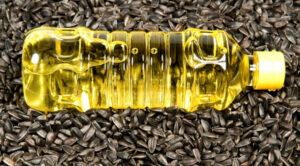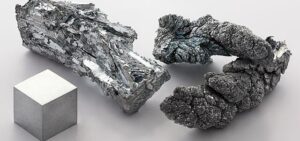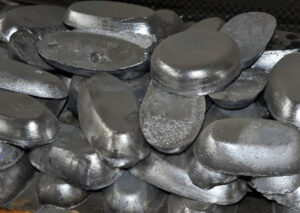
Total foreign trade in dairy products in November amounted to $54.7 million, up 3.3% from October ($53 million), according to the Ukrainian Dairy Industry Association (UDIA).
The industry association noted that export volumes in November continued to grow for the second month in a row and amounted to $23.84 million, adding 12.7% compared to October ($21.16 million) and 15.4% compared to September ($20.7 million).
At the same time, the value structure of exports in November 2025 was as follows: condensed milk and cream – 37%, cheese – 25%, butter – 21%. The value structure of exports in November 2025 compared to November 2024 changed slightly: the share of milk and condensed cream increased (from 30% to 37%) against the backdrop of a decrease in the share of cheese (from 32% to 25%).
Imports in November amounted to $30.9 million, down 2.9% from October ($31.8 million) and 2.2% from September ($31.6 million). In November 2025 compared to November 2024, the value structure of imports did not change significantly, in particular, the share of all types of cheese remained at about 84%.
The export-import balance in November was negative (-$7.0 million), as it was in October (-$10.6 million) and September (-$10.9 million), the association noted.
The ratio of exports to imports was 0.77 in November, 0.67 in October, and 0.65 in September.
Imports of dairy products in November this year exceeded exports by 1.3 times, the SMU summarized.

Vegetable oils accounted for 23% of Ukrainian exports in 2024, 60.9% of which went to European countries, according to the Ukrainian Agribusiness Club (UAC).
Analysts noted that 15% of vegetable oil exports from Ukraine were delivered to the Middle East, 14.8% to Southeast Asia, 4.8% to Africa, 3.1% to Asia (other countries), and 1.4% to America.
At the same time, sunflower oil accounted for 89.0% of exports, soybean oil for 5.5%, rapeseed oil for 4.2%, and others for 1.3%.
The UACB noted that sunflower oil accounts for the lion’s share (89%) in this category, which confirms Ukraine’s status as a key player in the global market for this product, while the share of soybean and rapeseed oils is also gradually increasing.
After record revenues of $7.04 billion from oil exports in 2021, even in the context of full-scale war, export revenues consistently exceed $5.6 billion annually. The 2024 figure ($5.76 billion) confirmed that this sector has not only survived but also successfully adapted to the new realities, remaining a reliable pillar of the economy, the business association emphasized.
At the same time, unlike raw material groups, vegetable oils as a processed product have a more diversified geography. Although Europe remains the leader, the total share of Asian and Middle Eastern countries exceeds 30%, which indicates the demand for Ukrainian oil in distant markets. The global demand for Ukrainian oil is confirmed by the overall improvement in export logistics and the increase in the number of importing countries, which rose to 139 in 2024 (compared to 133 in 2023).
“Vegetable oils remain a significant driver of Ukraine’s foreign trade among value-added products. One of the critical factors for exports remains the issue of the availability of logistics routes,” the association emphasized.
The UACB recalled that in 2024, the deep-water ports of the Black Sea regained their dominant position, accounting for almost half of all exports (compared to less than 15% in 2023), but alternative export channels—the Danube ports and the “Solidarity Routes”—continue to play a significant role, accounting for over 45% of shipments.

Kernel, one of Ukraine’s largest agricultural holdings, exported 1.3 million tons of grain in July-September 2026 (FY, July 2025-June 2026) exported 1.3 million tons of grain, which is 15% less than in the same period last year, but 27% more than in the previous quarter, thanks to greater availability of grain on the domestic market after the start of the winter wheat harvest.
According to the published quarterly report, wheat accounted for 74% of Kernel’s total exports, with the rest being corn and barley.
“The start of the new financial year for the Infrastructure and Trade segment was shaped by two key market dynamics: a delay in the harvesting campaign in Ukraine caused by weather conditions and slower-than-usual sales by farmers,” the agricultural holding said.
As a result, the cargo turnover of export terminals in the first quarter of FY 2026 amounted to 1.8 million tons, which is 17% less than in the same period last year, leading to a decrease in grain exports and the group’s overall sales portfolio of vegetable oils and meal.
Grain accounted for 75% of the total cargo turnover, edible oils for 13%, and vegetable meal for the rest.
The volume of grain received by silos in July-September 2026 FR amounted to 1.2 million tons, which is 34% less than in the previous year. Of this amount, 796 thousand tons were received from the agricultural holding’s own agricultural enterprises, and the rest from third-party suppliers.
“The decrease in arrivals mainly reflects the later start of the group’s harvesting campaign, as unfavorable weather conditions and uneven ripeness of crops in different regions delayed and reduced deliveries to warehouses,” Kernel explained.
The Infrastructure and Trade segment generated EBITDA of $20 million in the first quarter of 2026 FY, down 62% from the previous year.
Before the war, Kernel was the world’s leading producer of sunflower oil (about 7% of global production) and its exporter (about 12%). It is one of the largest producers and sellers of bottled oil in Ukraine. In addition, it is engaged in the cultivation and sale of agricultural products.

In Ukraine, oil flax remains a niche crop, but its gross harvest in the 2025-2026 marketing year (MY) will amount to 66 thousand tons, which is the highest result since the 2017/18 MY, according to the information and analytical publication UkrAgroConsult.
“Production is subject to fluctuations influenced by market factors and weather conditions. Since 2020, there has been a steady expansion of acreage. Growth is driven by demand from the EU, the main importer of flax. (…) The combination of expanded acreage and improved yields has been decisive. In the 2024/25 MY, there has been a partial recovery in yields, which are still below the crop’s potential,” analysts explained.
Experts noted that exports remain a key driver of the market — more than 80% of the Ukrainian flax harvest in 2024/25 MY is sent abroad. During the years of war, this share has more than doubled.
The main destination for flax sales is the EU (Italy, Poland, and Belgium are the top importers). After the start of the full-scale war, EU countries significantly reduced their purchases of Russian flax, reorienting themselves to alternative suppliers from Ukraine, Kazakhstan, and Canada.
At the same time, after peaking in 2023/24 MY (over 70 thousand tons), shipments from Ukraine decreased by approximately 24% in 2024/25 MY.
“The Ukrainian oil flax market is entering a phase of stable recovery. The crop is gradually regaining its position in the crop structure, forming a new niche for small and medium-sized agricultural producers. With support for exports and the development of processing, flax has the potential to establish itself as a promising alternative crop for the northern regions of the country, which are increasingly facing weather risks,” UkrAgroConsult concluded.

Imports of zinc and zinc products to Ukraine in January-October 2025 decreased by 8% to $45.52 million, while exports tripled to $1.14 million.
In October, imports amounted to $4.3 million, exports — $0.19 million.
In 2024, zinc imports increased by 27.5% to $58.61 million, and exports increased 3.4 times to $0.56 million.
Pure metallic zinc is used to recover precious metals, protect steel from corrosion, and for other purposes.

Ukraine sharply increased imports of lead and lead products—by 8.9 times, to $6.89 million in the first ten months of 2025.
At the same time, exports fell by 16.4% to $8.17 million.
For comparison, in 2024, lead imports increased 2.4 times to $2.39 million, while exports fell by almost a quarter to $11.4 million.
Lead is currently mainly used in the production of lead-acid batteries for the automotive industry. In addition, lead is used in the manufacture of bullets and certain alloys.